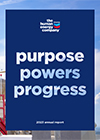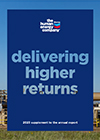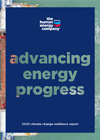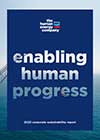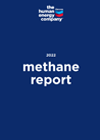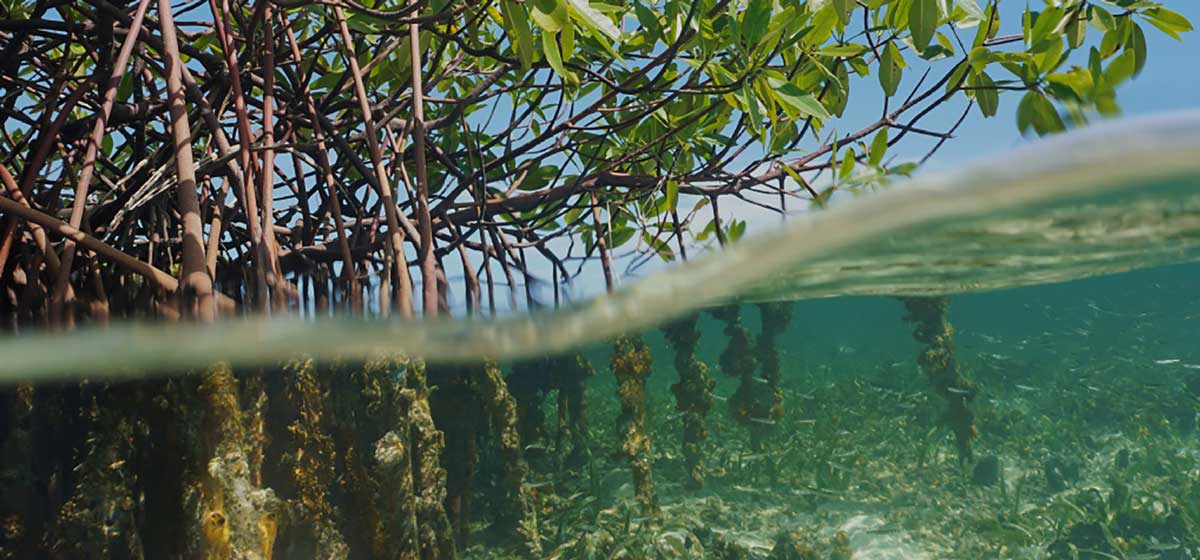

biodiversity
Biodiversity is the variation in living things in different regions on Earth, including the ecosystems and ecological processes that support them. Maintaining global biodiversity is a prominent and widespread public issue.
Chevron recognizes the importance of protecting and conserving a region’s biodiversity, and we have a long history of collaborating with communities, industry groups, regulators and conservation groups to identify and protect biodiversity in parts of the world where we operate. We also work to protect biodiversity through our operating practices and innovative solutions. This includes investing in scientific research and development to improve data quality and identify new technologies to manage biodiversity.
values
Protecting the safety and health of people and the environment is a Chevron core value. Therefore, we:
- Strive to design our facilities and conduct our operations to avoid potential adverse impacts to human health and to operate in an environmentally sound, reliable and efficient manner.
- Conduct our operations responsibly in all areas, which includes environments with sensitive biological characteristics.
performance
We strive to avoid and reduce significant impacts our projects and operations may have on sensitive species, habitats and ecosystems. This means that we:
- Integrate biodiversity into our business decision-making and management through our Operational Excellence Management System (OEMS).
- Our Environment Risk Management Process, under our Operational Excellence Management System, is designed to operationalize a risk-based approach to identify, assess and manage potential risks to the environment across the lifecycle of our assets, including those related to biodiversity.
- Understand that humans and the natural environment interact with each other in various ways. We consider those interrelationships and the functions that ecosystems perform in supporting sustainable economic development.
- Recognize that our activities could affect sensitive and valuable biodiversity inside and outside legally designated protected areas. Therefore, we:
- Decide whether and how to operate in a protected or sensitive area, based on consideration of the specific circumstances of the area and operation involved.
- Operate in such areas with government legal authorization when required and where we are confident we can comply with all regulatory requirements and use operating practices appropriately protective of the area.
- Use our OEMS processes to avoid or reduce potential risks of our operations to sensitive biological resources and seek ways to make positive contributions to biodiversity conservation in the area.
biodiversity research
As a member of the Influence of Structures In The Ecosystem (INSITE) program, Chevron has contributed to building a legacy of scientific investigation into the potential influence of marine structures on the ecosystem. INSITE is a public/private partnership with the U.K. government, academia and industry that leads research projects and a Ph.D. scholarship program. The objective is to provide stakeholders with independent science-based studies to better understand the influence of human-made structures on the ecosystem of the North Sea.
communication and engagement
For example, Chevron has been a member of global not-for-profit oil and gas industry association, Ipieca, since the late 1970s. We contribute technical expertise and participate in their Biodiversity and Ecosystem Services Work Group and task forces for Nature Positive, Nature Related Disclosure and Reporting and Nature Based Solutions. In 2022, our technical experts supported the updated Guide to Developing Biodiversity Action Plans and participated as one of Ipieca’s delegates in the 15th meeting of the UN Convention on Biological Diversity (COP15) in Montreal, Canada. Our communication and engagement efforts also include:
- Communicating about our biodiversity-related activities to employees and outside audiences, for example, through our Corporate Sustainability Report.
- Engaging with government, local communities and others to understand and work to address significant biodiversity issues in areas where we operate.
- Participating in industry associations and other forums to share and promote best practices for biodiversity conservation.
- Seeking to understand and, where appropriate, participating in development of external policy-making activities that affect our operations, such as those adopted under the U.N. Convention on Biological Diversity and national, regional and local biodiversity policies and plans.
- Working with a variety of external organizations to make positive contributions to biodiversity conservation globally and in areas where we operate.
innovative solutions to protect biodiversity
We invest in scientific research and develop and implement new technologies to manage biodiversity on and surrounding our assets.
We began trials on four solar-powered mobile lighting towers in 2020 at our Gorgon operations in Australia. Solar-powered lights remove or reduce many of the environmental impacts of diesel-powered lights, such as noise, odors, vibration and carbon emissions. The solar-powered LED lights maintain wavelengths at 590 nanometers, ideal for reducing impacts to turtle hatchlings and other nocturnal fauna, which tend to be less attracted to this wavelength. Based on the success of the trials, Chevron has leased an additional 27 units, for use in Australia, and is evaluating for wider use in our global efforts to monitor and prevent impacts to biodiversity.
success stories
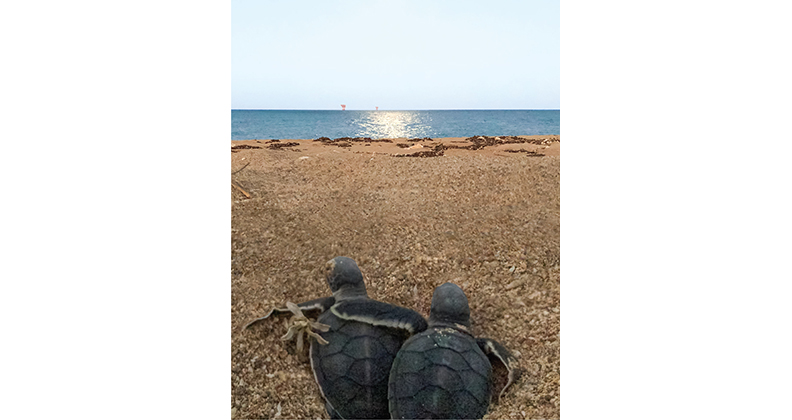
Chevron monitors green turtle hatchlings on Thevenard Island, Australia, as they journey from nest to ocean. We have measures in place to prevent the turtles from being disoriented by lights from onshore oil wells being decommissioned.
achieving operational goals while protecting the environment
Approximately 30,000 turtle hatchlings emerge from their Thevenard Island (TVI) nests during Australia’s summer months, December through March, and traverse the beach to the ocean. The 2018 migration coincided with the TVI Onshore Plug and Abandonment Project, which involved decommissioning 15 onshore wells after the TVI oil fields and production facility reached the end of their economic life.
Three species of sea turtle inhabit the waters surrounding TVI, and all of them are sensitive to light. Several Australasia business unit (ABU) teams working together identified that the 24-hour well decommissioning cycle could pose a risk to the turtle behavior, as the lights associated with the rig could distract hatchlings from their seaward journey. The project worked to develop a strategy to accommodate the project execution and the protection of the turtles.
To protect the turtles while adhering to the administrative schedule, the ABU partnered with the regulators and fauna handlers to implement risk mitigation strategies. Turtle fences were installed around well pads, regular lighting assessments to assess the efficacy of lighting controls were conducted, hatchling movements were monitored and temporary rig shutdowns occurred during high-risk periods to protect the turtles.
This quick response to the needs of the environment reduced risks to both the project and the turtles.
Chevron's management of the oil field on Barrow Island, off the northwest coast of Australia, is recognized as an industry benchmark for the coexistence of petroleum development and biodiversity protection. Since operations began in 1964, Chevron has implemented measures designed to prevent the introduction of invasive mammal species and the spread of weeds on this Class A nature reserve.
conserving endangered lapwing in Kazakhstan
Tengizchevroil (TCO), our joint venture in Kazakhstan, sponsors the Association for the Conservation of Biodiversity of Kazakhstan (ACBK) and its work on the Sociable Lapwing Conservation Project. While this critically endangered migratory bird is not present in TCO’s operational area, it does breed in Kazakhstan. This conservation project is an important biodiversity offset for TCO to achieve no net loss of terrestrial natural habitat.
In May 2022, the ACBK conservation team discovered the bird in locations where it had not been witnessed nesting for more than seven years. The team satellite-tagged, for the first time, an adult female bird in addition to 17 more birds. ACBK will analyze migratory paths and identify where these individual birds spend their wintering time, which will support additional conservation programs, such as nesting habitat protection.
Chevron supports the Lekki Conservation Center in Lagos, Nigeria, as part of our effort to preserve nature wherever we operate. Located across the street from Chevron’s Lagos offices, this urban nature preserve is the only one of its kind on the Lekki Peninsula. Its 193 acres (78 hectares) of swampland and savannah are home to monkeys, reptiles and birds.
helping a california harbor seal rookery thrive
In 2017, Chevron established the years-long West Coast Decommissioning Program to complete the decommissioning of five oil platforms and related facilities in federal waters off the central coast of California. The Carpinteria Gas Plant pier provides shore-based support to two of the platforms. This pier is adjacent to an active harbor seal rookery. Independent volunteers watch over the rookery year-round, particularly during pupping season from December through May when the city of Carpinteria closes the beach to the public.
Working with the volunteers, we allow monitoring from an overlook on plant property. Wherever possible, the West Coast Decommissioning team takes great care to avoid and reduce disturbances to the seals and their pups. We adjust pier lighting and reduce the public address system noise levels to reduce disturbances to the rookery. Work plans eliminate routine activities on the beach during pupping season. When work is unavoidable, we coordinate with the city and dedicate onsite wildlife monitors to reduce potential impacts to the seals. Our personnel also undergo marine mammal training, specific to their responsibilities, to remain sensitive to the seals and the surrounding environment.
restoring new mexico wetlands
Regulatory-required remediation activities at the Questa Mine in New Mexico triggered the need to offset 2.74 acres of wetlands. In consultation with stakeholders, Chevron elected to restore wet meadows and mountain fen, which is a high-altitude peat-forming wetland unique to the area.
Restoration in the Cabresto Creek watershed of New Mexico’s Sangre de Cristo Mountains began in 2019. By 2021, we had restored approximately 6.7 acres of wetland habitat through the installation of corrective structures.
Site monitoring confirms a reduction in erosion and a rise in the water table. Vegetation is responding to the hydrology improvements, and characteristic mountain fen and wet meadows plant species are returning.
preserving gnatcatcher habitat in california
For nearly a century, the West Coyote Hills property in Fullerton, California, operated as a 2,000-acre oil field until operations ceased in the early 1990s. The property is one of the few large, contiguous tracts of natural lands south of the San Gabriel Mountains. It is home to a variety of wildlife species and protected vegetation, including the endangered California gnatcatcher and coastal sage scrub, the bird’s habitat.
In 2021, we sold 24 acres to the city of Fullerton. The sale allowed remediation of the site and a link to the Robert Ward Preserve, an area we had previously donated to the city. Additionally, Chevron converted two miles of roads in the preserve to nature trails for public use.
chevron protects biodiversity
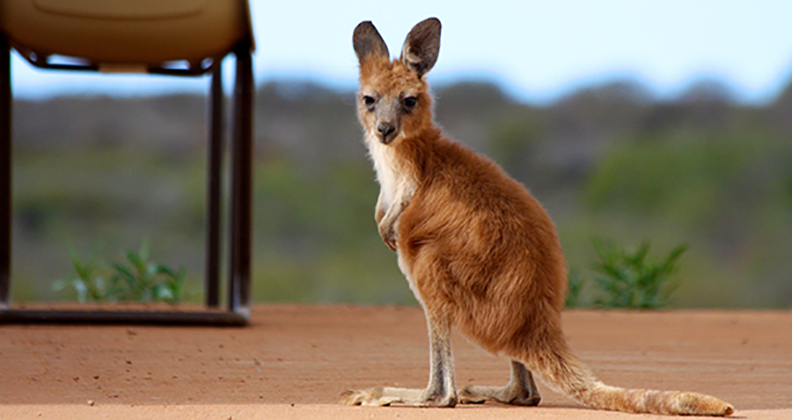
Chevron has instituted a strict quarantine management system to protect biodiversity on Barrow Island. In addition to being a Class A nature preserve, the island off Western Australia is also home to Chevron’s massive Gorgon natural gas development project.
wild files
Wild Files is an infographic story series that spans the world to cover interesting examples of how we deliver on our commitment to environmental stewardship.
environmental management company
